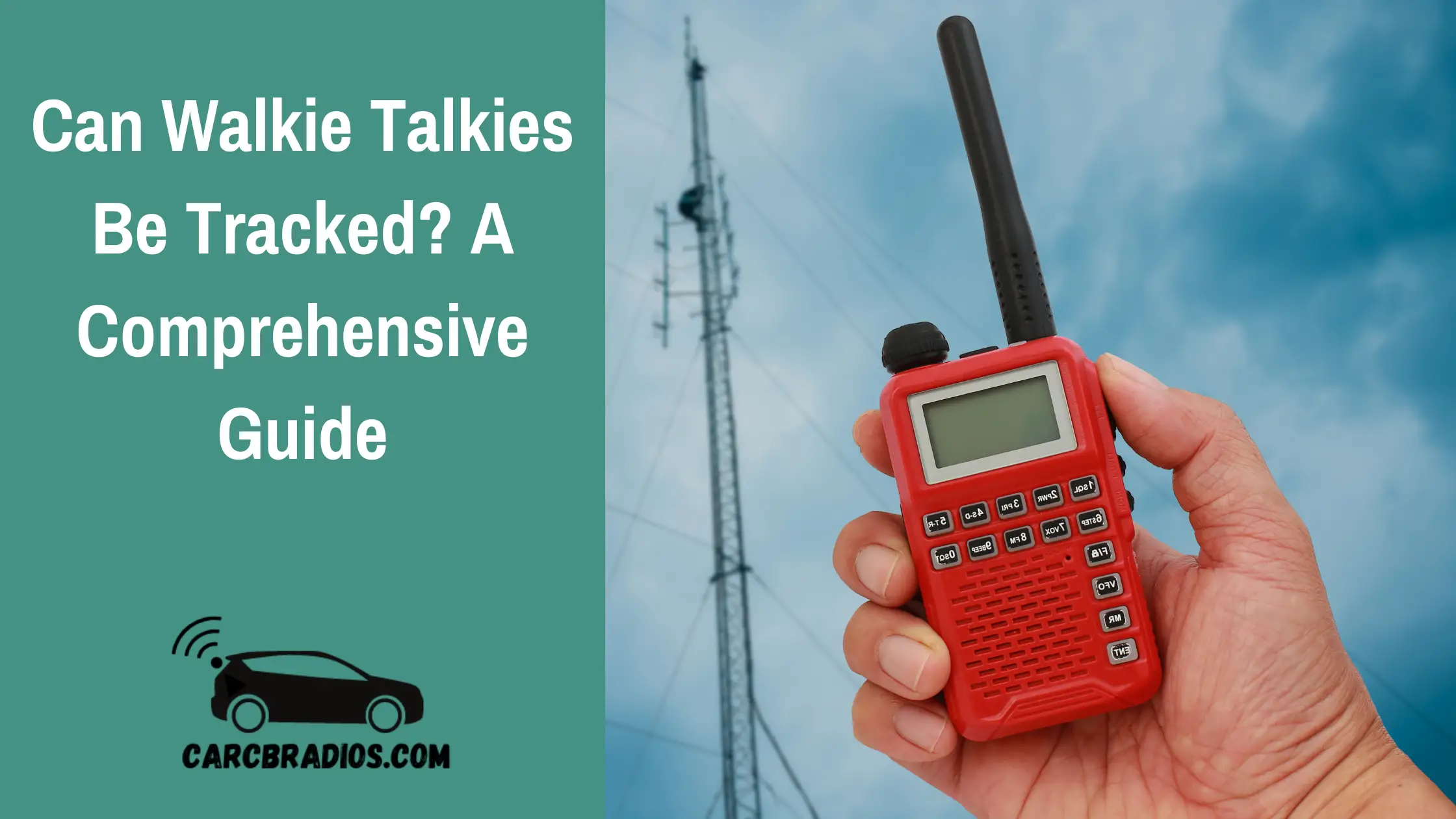By: Jeremy Neisser
As someone who enjoys using walkie talkies for communication and emergencies, it's important to understand whether or not they can be traced if lost. This is a common concern for many people who rely on walkie talkies as a means of communication without relying on network connectivity. While it may seem like a straightforward answer, the truth is not so simple.
In this article, I will explore the question of whether walkie talkies can be traced once lost. I will provide both a short and long answer to this question, as well as address some frequently asked questions on the topic. By the end of this article, you will have a clear understanding of whether or not walkie talkies can be traced, and what you can do to protect yourself in case of loss or theft.
Key Takeaways
Walkie talkies can be traced if certain conditions are met.
There are ways to prevent your walkie talkie from being traced.
It's important to take precautions to protect your walkie talkie from loss or theft.
Short Answer
Tracking walkie talkies is possible through radio triangulation, trilateration, or fox hunting. Although it may not be as precise as tracing a GPS device, it is still achievable. The device emits radio waves when turned on, which can be detected to determine its location. Therefore, the claim that walkie talkies are challenging to track is not entirely accurate.
Long Answer
How a Transmitter Sends Signals to a Receiver
When I use a walkie talkie, I can both send and receive information, provided that only one person talks at a time and we use the same channel. I can press the PTT (push-to-talk) button to convey my message, and the other person will receive it immediately if they are listening to the channel. When no one is talking, a static sound emits. This communication is made possible through radio waves, which fall under the electromagnetic field (EMF). When I speak over a walkie-talkie (in this case, considered a transmitter), it produces radio waves that can travel at the speed of light. The other person (receiver) can receive the message, and the radio waves jump from the transmitter to the receiver, recreating the original signal.
Triangulation
The triangulation method is the most common way to track a walkie talkie, and it measures the direction or radial distance of the received signal from two to three different points to determine a radio transmitter's location, or in our case, the walkie talkie. To set up three stations to locate the device, I can use the antenna from a walkie talkie. The stations must also have the same frequency. I can position the antenna towards the transmitter from each station to detect the strongest signal emitted by the transmitter. In this way, the receiver's signal can quickly locate the transmitter.
The advantage of using triangulation is that I only need to accurately measure the transmitter stations and place the receiving station to its corresponding points. However, I must confirm the transmitter's position to avoid detecting objects such as communication towers, steel buildings, and other obstructions. The receivers can confuse these obstructions as transmitters.
Trilateration
Trilateration also uses the triangulation method by setting up three or more receiving stations to quickly detect the transmitter's signal. The only difference is that it measures the length of time for the radio signal to reach the stations. I must set the stations precisely from the transmitter to get an accurate time.
Fox Hunting
Fox hunting, or transmitter hunting, is the most popular way to locate a transmitter. It is an amateur radio direction finding (ARDF) activity set up by radio enthusiasts to find one or more radio transmitters hidden in an area. It is usually held in sports or any event that requires only a directional antenna to start.
I can use multiple antennae to determine the signal's direction. One way is to use a single antenna from the receiver and rotate it in space at a high rate, resulting from the Doppler Shift principle. When the antenna gets closer to the transmitter, the received signal strength increases as well. Meanwhile, the signal decreases when the antenna moves farther away from the transmitter. By observing the receiver signal's changes as the antenna rotates, I can easily detect the transmitter's direction.
Another method is to mount two antennae at a specific distance, using the arrival principle's time difference. I can use electronic devices with this method to compare the signal received from the antenna. It also determines if the signal is coming from a direction closer to the antenna or the other. In this way, I can detect the transmitter's location to whichever antenna it is closest to.
Is Tracing a Walkie Talkie Legal?
Yes, tracing a walkie talkie is legal as long as the FCC licenses the walkie talkie since channels are authorized and more private. It can be easier to trace licensed walkie talkies because interruptions on channels are less likely to happen. However, I must read the laws and regulations in my area regarding the use and tracing of these devices to avoid any legal issues.
In conclusion, tracing a walkie talkie is possible through various methods such as triangulation, trilateration, and fox hunting. Each method has its advantages and disadvantages, and I must choose the most suitable method based on the situation. Tracing a walkie talkie is legal as long as I follow the laws and regulations in my area.
You may be interested in: What Channel Should I use on my Walkie Talkie?
Conclusion - Tracing Walkie Talkies
As a walkie talkie acts as both a transmitter and a receiver, it can be traced through radio waves. Triangulation, trilateration, or fox hunting methods can be used for effective tracing. Tracing is legal if the walkie talkie is licensed. It is important to follow the appropriate method depending on the situation. Proper tracing can be crucial in emergency situations and can help save lives.
You may like: 11 Walkie Talkie Tips for Beginners
Frequently Asked Questions
How can I locate someone using a walkie talkie?
Locating someone using a walkie talkie can be difficult since it doesn't have GPS tracking capabilities. However, if you know the general area where the person is located, you can use the walkie talkie's signal strength indicator to help you find them. Move around and observe the signal strength until it reaches its maximum level, which will indicate that you are close to the person.
Are walkie talkies traceable by the police?
Walkie talkies are not easily traceable by the police unless they are using specialized equipment. The police would need to use a device that can intercept and track radio signals in order to locate the walkie talkie. However, it's important to note that using a walkie talkie to commit a crime is illegal, and the police can use other means to track down the perpetrator.
Can walkie talkies be tracked by GPS?
Most walkie talkies do not have GPS tracking capabilities, so they cannot be tracked using GPS. However, there are some walkie talkies that have GPS tracking features, which can be useful in certain situations.
Is it possible to record conversations on a walkie talkie?
Yes, it is possible to record conversations on a walkie talkie. Some walkie talkies have built-in voice recording features, while others require external recording devices. However, it's important to note that recording someone without their consent is illegal in some jurisdictions.
What is the range of a Motorola walkie talkie?
The range of a Motorola walkie talkie can vary depending on the model and the terrain. In general, Motorola walkie talkies have a range of up to 35 miles in ideal conditions, such as in open areas with no obstructions. However, the range can be significantly reduced in areas with obstacles such as buildings, hills, and trees.
Can walkie talkies work across state lines?
Walkie talkies can work across state lines, but it depends on the frequency and power of the walkie talkie. If you are using a walkie talkie that operates on a frequency that is legal in both states, and the power output is within legal limits, then it should work across state lines. However, it's important to check the regulations in each state before using a walkie talkie across state lines.

Hi & Welcome!
My name is Jeremy and I have been an avid car nut for many year. My first car was an 1987 Honda CRX. I put in my first Kenwood stereo, amp, 2 10" JLs and a CB Radio in it and have been an avid user of CBs and car radios for years. I'll do my best to share my tips, information and thoughts to help you with whatever question you might have, ABOUT ME
After I graduated from High School, I worked 5 years are Radio Shack and 3 years at Circuit City answering questions and helping customers with various electronics questions.

